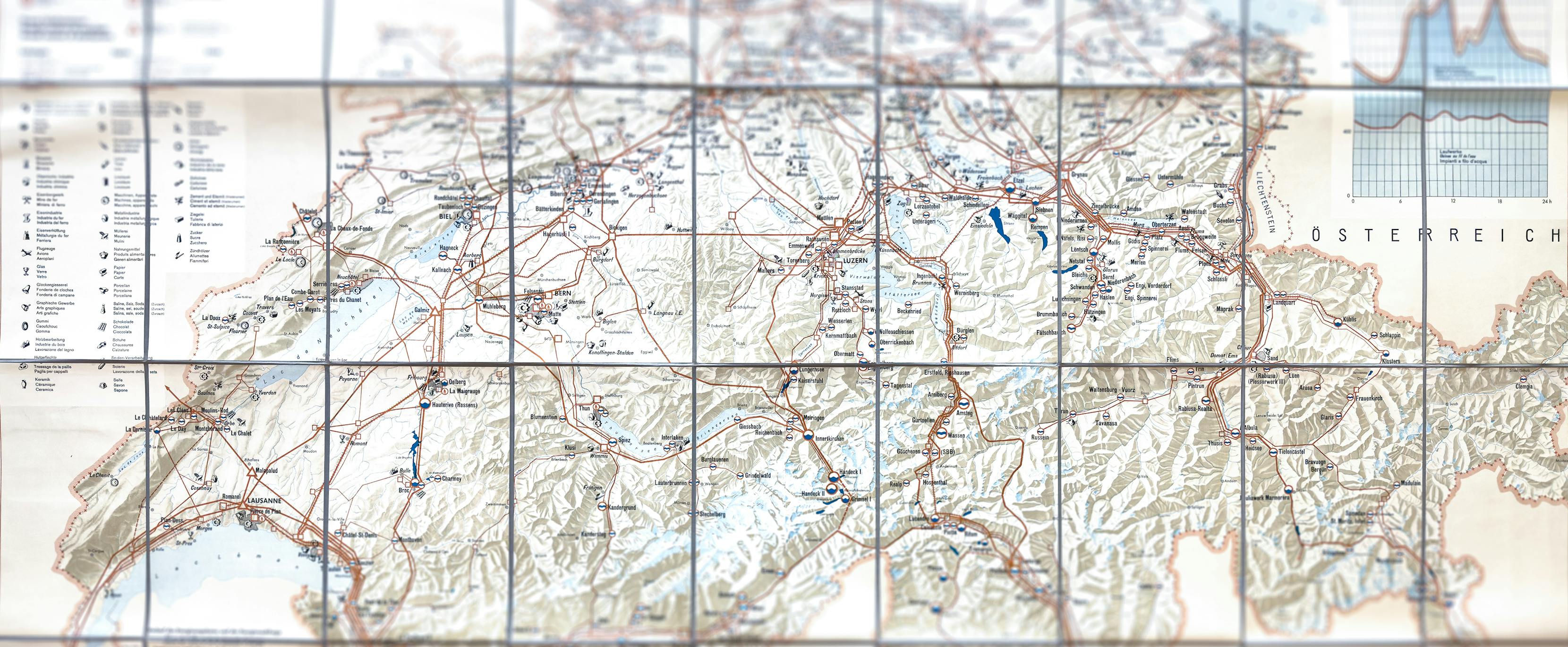
Electricity was never invented – it has always existed. It is a natural phenomenon. But everything relating to electricity was invented: how we produce it, how we transport it to businesses and households, and how we use it in everyday life. In this blog series, we take you on a journey through time to explore the development of the supply of energy in Switzerland. In 1672, the physicist Otto von Guericke invented the first machine that could generate electrical charges – the first generator. Exactly 100 years later, Alessandro Volta constructed the first battery that generated electricity through a chemical reaction.
The first power stations
Let’s take a leap into the 19th century. At the beginning of industrialisation, in around 1850, cheap coal was available on a massive scale in Great Britain. Coal-friendly technologies were developed as a result, among other things to produce electricity. The coal regime for generating electricity spread throughout Europe. In Switzerland, the situation was different from most countries in Europe. Swiss coal mines produced only scarce raw material of low quality. This meant that Switzerland was dependent on the import of coal from abroad. However, the technical set-up for this was lacking. Switzerland used hydropower and wood as alternatives to coal. The construction of the Swiss railway network began in the 1860s. This improved the transport connection to foreign countries and allowed coal and other goods to be transported to Switzerland by rail. Coal now developed into a primary energy carrier in Switzerland, too.
Within our own borders
During the First World War, Switzerland suffered a shortage of fossil fuels as it was once again unable to import coal from abroad because of the geopolitical situation. Due to this shortage, Switzerland concentrated on producing electricity from raw materials found within the country. Hydropower in particular was expanded on a large scale. The Alpine countries were interested in this technology because flowing watercourses, especially downhill, as they occur en masse in the Alps, are well suited to energy production. The first large run-of-river power stations were built at the beginning of the 20th century. There were 6,714 hydroelectric power plants in Switzerland in 1914. Only 14 of them had a capacity of more than 10 megawatts – the rest were small hydropower plants. Due to the availability of cheaper electricity from large power plants, many of them were shut down. Today, there are 650 hydroelectric power plants in Switzerland and around 1,000 small hydropower plants – four times fewer power plants in total than 100 years ago.
The first significant combination of two technologies in Switzerland was the high-pressure hydroelectric power station on the Löntsch, which went into operation in 1908. It is also the first combined electricity network of Nordostschweizerische Kraftwerke, now known as Axpo. This network consists of the storage power plant on the Löntsch and the low-pressure power plant in Beznau. This technology makes it possible to compensate for outages at run-of-river power stations in winter using the water stored in the reservoirs.
There were 6,714 hydroelectric power plants in Switzerland in 1914. Today, there are 650 hydroelectric power plants in Switzerland and around 1,000 small hydropower plants – four times fewer power plants in total than 100 years ago.
Swiss cantonal provincialism
The power plants were mainly built near large rivers in central Switzerland and near the large consumer centres. The power grid had to be expanded to transport the electricity from the new power plants. A wide variety of companies were responsible for these projects. From state-funded to private, big and small alike, various service providers contributed to the pipeline infrastructure. More than 100 electric power suppliers had been created by the end of the 19th century. As early as 1920, the first efforts were made to assign the power lines to a single umbrella company. At the time, the initiative failed due to «cantonal provincialism». That is why the Swiss electricity grid was created separately in different parts of the country. In 1937, French-speaking Switzerland and German-speaking Switzerland merged their grids. From 1950 onwards, all Swiss electricity grids were interconnected. The reason for the renewed interest in a unified power grid was the new production sites that were created by the expansion of hydropower. Energy was no longer produced and consumed locally, but produced centrally and distributed over a large area. This is how the Swiss interconnected grid came into being. The next milestone, in the 1950s, was the merger of the French, German and Swiss electricity grids – thus creating the continental European interconnected grid.
As early as 1920, the first efforts were made to assign the power lines to a single umbrella company. At the time, the initiative failed due to «cantonal provincialism».
The birthplace at Laufenburg
After the Second World War, electricity consumption in Europe rose sharply. Some countries were no longer able to cover their electricity requirements with domestic production, while other countries had a production surplus. The solution: a European interconnected grid. After Switzerland managed to overcome its «cantonal provincialism» and the electric power suppliers in the country merged their electricity grids, they went one step further: in 1958, the electricity grids of Switzerland, France and Germany were merged at the substation in Laufenburg, Aargau. This created the continental European interconnected grid. Over 30 countries are now connected to each other in the European interconnected grid and Switzerland is connected to neighbouring countries through 41 cross-border lines. This makes it possible to overcome power bottlenecks in individual countries, compensate for power plant failures and overproduction, and avoid overloads.
The he(a)rt(z) of the European interconnected grid
The substation and cross-border lines became known as the «Star of Laufenburg». In 2010, the Institute of Electrical and Electronics Engineers in New York named it a historic milestone in the history of electricity.
While hydropower is still one of the most important domestic energy suppliers in the Swiss electricity mix, there are no longer any coal-fired power plants. Coal remained an important fuel in this country until about 1960. Then it was quickly replaced by oil – more on that in our next blog.




